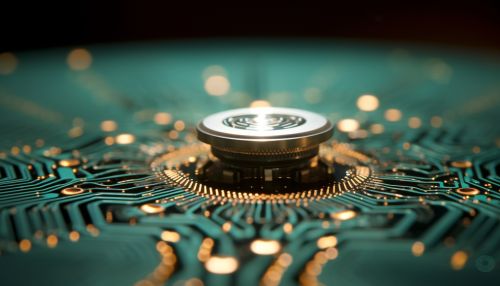Biomimetic Sensors
Introduction
Biomimetic sensors are a type of sensor that are designed to mimic the sensory functions found in living organisms. These sensors are developed based on the principles of biomimetics, a field of study that draws inspiration from the structures, systems, and elements of nature to solve complex human problems. The development of biomimetic sensors is a multidisciplinary effort, involving fields such as biology, chemistry, physics, and engineering.


Principles of Biomimetics
Biomimetics, also known as bionics, biognosis, or biomimicry, is the imitation of models, systems, and elements of nature for the purpose of solving complex human problems. The term "biomimetics" is derived from the Greek words "bios", meaning life, and "mimesis", meaning to imitate. The field of biomimetics is based on the belief that evolutionary pressure has led to the development of optimal solutions in nature. By studying these solutions, scientists and engineers can develop innovative and sustainable technologies.
Biomimetic Sensors: An Overview
Biomimetic sensors are devices that mimic the sensory functions of living organisms. These sensors can detect and respond to various stimuli, such as light, heat, pressure, chemical substances, and electrical signals. The design and functioning of these sensors are inspired by the sensory systems found in various organisms, ranging from bacteria and plants to insects and mammals.
Types of Biomimetic Sensors
Biomimetic sensors can be classified into various types, depending on the type of stimulus they are designed to detect. Some of the main types of biomimetic sensors include:
Biomimetic Chemical Sensors
Biomimetic chemical sensors, also known as chemical sensors, are designed to mimic the chemical sensing capabilities of living organisms. These sensors can detect specific chemical substances in the environment, similar to how the olfactory system in animals can detect specific odor molecules.
Biomimetic Optical Sensors
Biomimetic optical sensors are designed to mimic the light sensing capabilities of living organisms. These sensors can detect and respond to various forms of light, similar to how the visual system in animals can detect and respond to light.
Biomimetic Thermal Sensors
Biomimetic thermal sensors are designed to mimic the heat sensing capabilities of living organisms. These sensors can detect and respond to changes in temperature, similar to how certain organisms can detect and respond to changes in their thermal environment.
Biomimetic Mechanical Sensors
Biomimetic mechanical sensors are designed to mimic the mechanical sensing capabilities of living organisms. These sensors can detect and respond to mechanical stimuli, such as pressure and vibration, similar to how the tactile system in animals can detect and respond to mechanical stimuli.
Applications of Biomimetic Sensors
Biomimetic sensors have a wide range of applications in various fields, including medicine, environmental monitoring, security, and robotics. Some of the key applications of biomimetic sensors include:
Medical Applications
In the medical field, biomimetic sensors are used in various applications, such as disease diagnosis, drug delivery, and patient monitoring. For example, biomimetic chemical sensors can be used to detect specific biomarkers in a patient's body, aiding in the early detection and diagnosis of diseases.
Environmental Monitoring
Biomimetic sensors are also used in environmental monitoring, where they can detect and monitor various environmental parameters, such as air quality, water quality, and soil conditions. For example, biomimetic chemical sensors can be used to detect harmful pollutants in the environment.
Security Applications
In the field of security, biomimetic sensors are used in various applications, such as intrusion detection, surveillance, and biometric authentication. For example, biomimetic optical sensors can be used in surveillance systems to detect and track intruders.
Robotics
In robotics, biomimetic sensors are used to enhance the sensory capabilities of robots, enabling them to interact more effectively with their environment. For example, biomimetic mechanical sensors can be used to enhance the tactile sensing capabilities of robots, enabling them to handle objects more effectively.
Future Perspectives
The field of biomimetic sensors is a rapidly evolving field, with ongoing research aimed at developing more advanced and efficient sensors. Future developments in this field are expected to lead to the development of sensors that can mimic the sensory capabilities of living organisms more accurately and efficiently. This, in turn, is expected to expand the range of applications of biomimetic sensors, opening up new possibilities in various fields.
